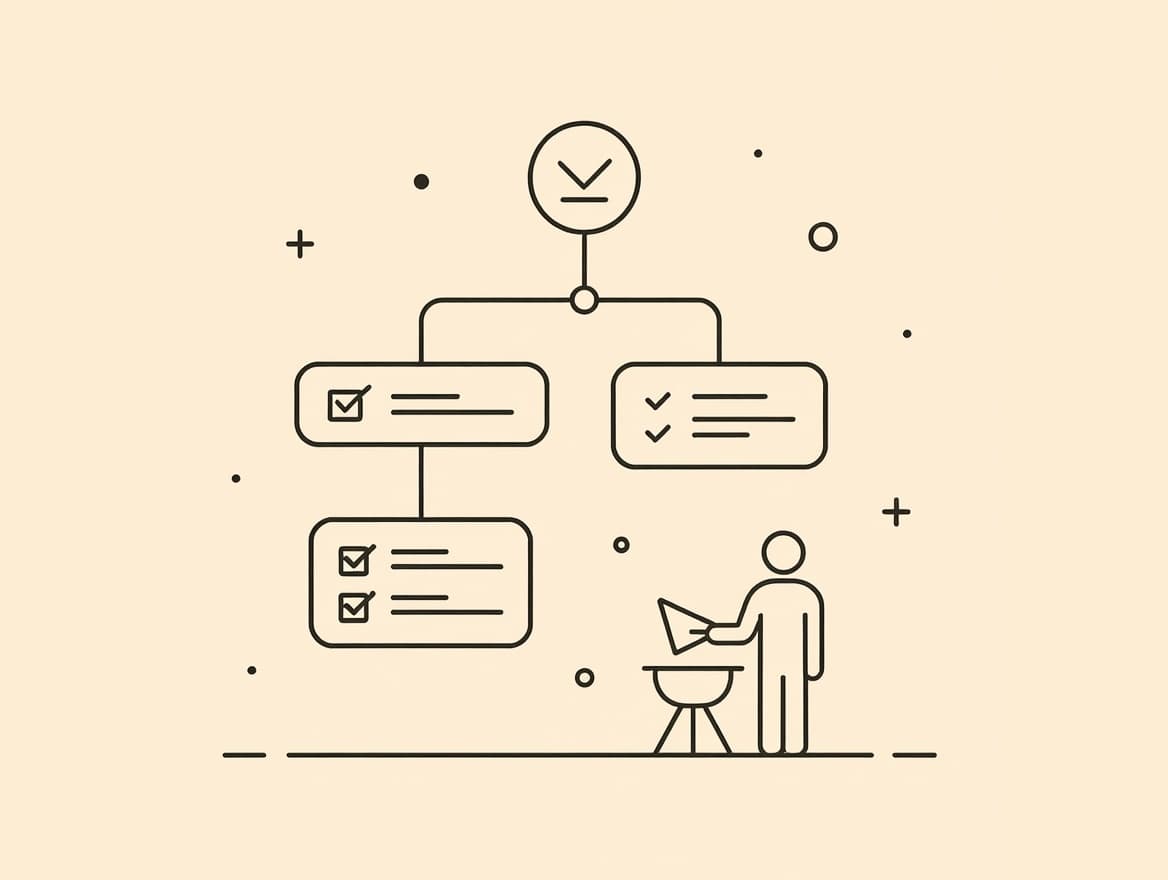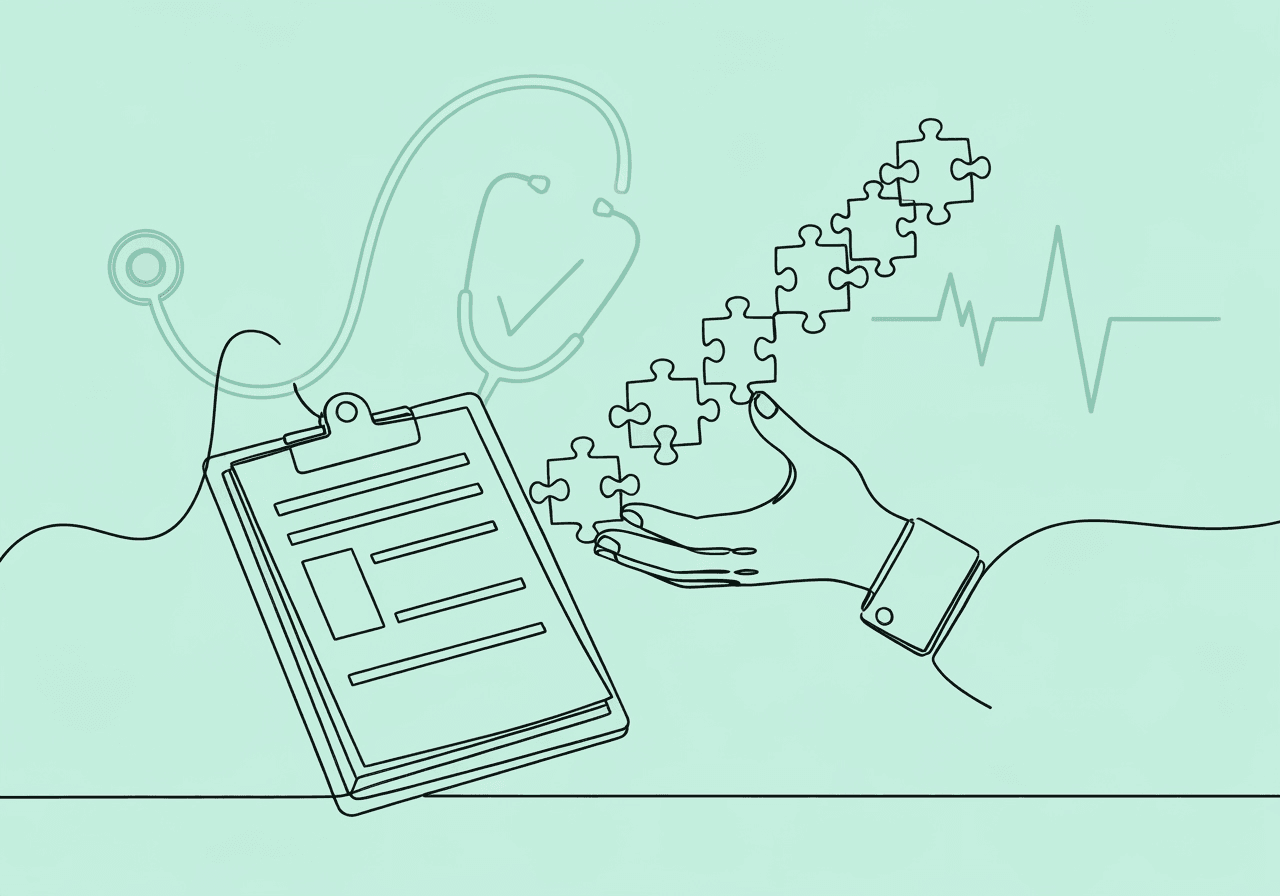ABA Treatment Plan vs LMN: Key Differences for BCBAs

Dealing with insurance approvals can be a headache for BCBAs, especially when mismatched paperwork derays client care. In ABA therapy, where proving medical need is key, grasping the differences between an ABA Treatment Plan vs LMN documentation helps secure coverage and dodge audits. This guide shares practical strategies from payer rules and expert tips to smooth your workflow.
You'll learn about common hurdles in approvals, a clear breakdown of these documents, their roles and parts, a handy table for reference, and steps to align them against denials. In the end, you'll gain ways to strengthen your BCBA authorization documents, creating reliable submissions that uphold clinical standards and billing success.
What Challenges Do BCBAs Face in Authorization Documentation?
BCBAs often hit roadblocks in insurance approvals due to shifting payer rules and the push for solid proof of medical need. Initial claim denial rates for ABA therapy range from 15% to 30%, much higher than other medical services. This stems mainly from spotty prior auths or weak justifications for care Links ABA Billing Guide.
A 2024 report from Becker's Payer Issues & Voice of the Provider notes that overall initial denial rates across healthcare claims hit 11.81%. ABA gets extra review because of differing state laws Becker's 2024 Report.
These issues ramp up during first-time or renewal auths. Insurers want proof tying ABA to real client gains. If clinical plans don't match payer files, services stall, hurting progress. Using functional assessments and progress notes upfront can ease this, as BACB guidelines suggest.
Pitfalls like fuzzy goals or skipped baselines often spark audits. BCBAs fight back with standard templates that fit payer needs. This builds steady submissions overall.
What Is an ABA Treatment Plan and Its Role?
The ABA Treatment Plan acts as the core guide for therapy. It directs BCBAs, RBTs, and families in using proven methods. Built from full assessments, it tackles unique behavior challenges.
Aetna's 2024 Applied Behavior Analysis Medical Necessity Guide says it needs clear target behaviors with metrics like frequency or intensity Aetna ABA Guide.
Key parts usually cover:
- Patient details and diagnosis: Info on ASD or similar issues, plus starting function levels.
- Assessment findings: Results from tools like VB-MAPP, backed by hard data.
- This includes skill gaps and behavior baselines.
- Clear, trackable goals: SMART aims for building skills and cutting problem behaviors, with step-by-step methods.
- Hours and checks: Reasons for therapy time, oversight, and family training, along with tracking tools.
- Exit strategies: Rules for ending services or spreading skills to new spots.
This plan serves clinical staff and families. It stresses hands-on use, not just payer proof. UnitedHealthcare's ABA Program Description (2023) calls for person-focused plans, dated within 30 days of start, matching age-based aims UHC ABA Description.
BCBAs refresh it every six months or with big changes. This keeps things flexible for clients. In real work, a strong plan cuts gaps by giving RBTs exact steps. Say, it could outline trials for talking skills, starting from 20% success rates.
How Does a Letter of Medical Necessity Justify Services?
The Letter of Medical Necessity (LMN) works as a short pitch to win insurer buy-in for ABA. It stresses why services are vital for client health. Needed for prior auth, it skips daily details for coverage focus.
Aetna's guidelines outline LMN basics: Use letterhead, get a licensed signer like a doctor or BCBA, and list diagnosis with DSM-5-TR details Aetna ABA Guide.
Core elements feature:
- Diagnosis and impacts: Straight ASD note, covering issues in talking, social ties, and safety.
- Why ABA fits: Proof-based case on why other options fall short, citing ABA success studies.
- Service summary: Goal highlights, hours (like 20-40 per week), and time frame, linked to gains.
- Provider info: BCBA background and contacts for checks.
- Backup facts: Starting stats and outlook, focusing on drops in tough behaviors.
Insurers like Aetna check LMNs against need rules, such as life-affecting deficits. It targets admins only—keep it brief at 1-2 pages. Refresh with renewals, say every six months, to show advances and hold coverage.
BCBAs team up with doctors on LMNs for trust. This avoids rejections from thin reasons. For one, it could flag ABA for runaway risks, using event logs.
ABA Treatment Plan vs LMN Documentation: A Side-by-Side View
Spotting the ABA Treatment Plan vs LMN documentation gaps stops mix-ups in BCBA authorization documents. Both back proof of medical need, but vary in detail, aim, and role. The plan covers therapy nuts and bolts; the LMN sums up compelling cases for payers.
This table pulls from field standards for quick scan:
| Aspect | ABA Treatment Plan | LMN Documentation |
|---|---|---|
| Primary Purpose | Guide for hands-on therapy | Pitch for coverage sign-off |
| Audience | BCBAs, RBTs, families | Payers, checkers |
| Length | In-depth (10-20+ pages) | Short (1-2 pages) |
| Key Focus | Step-by-step methods, data tracking | Need proof, result logic |
| Components | Full review, SMART aims, checks | Diagnosis recap, hour ask, forecast |
| Update Frequency | With changes (like quarterly) | At auth renewals (every 6 months) |
| Evidence Base | Behavior reviews, start data | DSM rules, treatment studies |
It draws from the Association of Professional Behavior Analysts' Model Coverage Policy (2022). Plans need behavior defs; LMNs hit payer need points ABACodes Policy. Both lean on diagnosis and aims. Matching them cuts denial odds, pegged at 15-30% for off-sync files per Links ABA (2024) Links ABA Billing Guide.
Shared spots boost files. Both can use the same start data to show issue depth. For more on ABA billing basics, check our ABA Billing Essentials Guide.
How to Align ABA Treatment Plan with LMN Documentation?
Matching your ABA Treatment Plan to LMN documentation dodges denials and flags. It creates smooth BCBA authorization documents. Begin by linking base items like diagnosis and start data, as Your Missing Piece's 2024 guide advises for need-focused plans Your Missing Piece Guide.
Mismatches in goal levels fuel many of the 15-30% denial rates in ABA claims Cube Therapy Billing Guide.
Try these proven steps:
- Link key data early: Fold in the same FBA outcomes to both. This backs methods and need.
- Stick to shared words: Spell out behaviors clearly in the plan (e.g., "tantrum: loud complaint over 5 minutes"). Recap the same in LMN for payer ease.
- Go with set styles: Use SOAP notes in sessions to tie daily wins to plan aims. This simplifies LMN refreshes.
- Review notes quarterly to spot trends.
- Team up on drafts: Check both with cross-team input at start. Make sure aims fit client and payer wants.
- Check often: Set a six-month update schedule. Do in-house scans to fix gaps pre-file.
- Fit to insurers: Pull from rules like Aetna's measurable focus. Tweak without shifting clinical core.
These tactics, from Cube Therapy Billing (2024), craft a tight story for reviews Cube Therapy Strategies. Say your plan seeks 25 hours weekly for social gains—the LMN ties it to deficit proof. This cuts appeal work; payers stick to 56% of first denials sans firm matches KFF 2023 Report.
Such moves lighten admin loads. BCBAs can zero in on client wins. Custom templates speed things up. See our Documentation Best Practices Post for templates.
Frequently Asked Questions
What Makes an ABA Treatment Plan Effective?
A solid ABA treatment plan covers diagnosis, assessment data with baselines, measurable goals, methods, hours, and monitoring. Autism Learning Partners (2024) says it needs custom touches like skill spread plans and family input for direction Autism Learning Partners Plan.
These fit BACB rules and payer asks. Update every six months with progress.
How Does LMN Differ from ABA Treatment Plan in Aim?
LMN sums diagnosis, deficits, and need for payers. The treatment plan spells out procedures and tracking. Hidden Talents ABA (2024) points out LMNs hit results and hours in 1-2 pages; plans map full paths Hidden Talents LMN.
This split lets BCBAs customize files, skipping denial traps.
What Papers Need Prior Auth for ABA?
You need assessment, plan, LMN, diagnosis like ADOS-2, and provider proofs. Raven Health (2024) stresses hour reasons and need ties to ASD Raven Health Authorization.
File in time frames, such as 30 days ahead, to avoid holds.
How Do BCBAs Meet Insurance Rules to Skip Denials?
Use detailed notes with metrics, track auths on calendars, and match plans to guides like Aetna's. Operant Billing (2024) says exact codes and appeal prep drop denials from 15-30% Operant Billing Rejections.
Add training and checks for steady compliance.
Why Do ABA Claims Get Denied, and How to Fix?
Reasons hit no prior auth, code slips, and thin need proof—fueling 15-30% rates. Ambitions ABA (2024) suggests full files and appeals with extras to clear blocks Ambitions ABA Hurdles.
Check eligibility soon to cut risks.
How Often to Update LMN and Treatment Plan?
Refresh both every six months or with key shifts to match needs and keep auths. Carelon Behavioral Health rules (2024) tie this to re-checks for approvals Carelon Guidelines.
Steady updates block coverage gaps.
Tying together ABA Treatment Plan vs LMN documentation shows a joined front for proof of medical need that protects client access to key care. Payer insights from Aetna and UHC show how matched, fact-based files trim the 15-30% denial rates. They also spotlight ABA's power in building real strides for those with ASD.
For BCBAs, this calls for sharp BCBA authorization documents to juggle top care and paperwork. Start by checking plans to payer forms for shared starts and aims. Then use a submit checklist, teaming with docs on LMNs. Try auto-track tools last. These aid steady services, boosting ABA's impact. For deeper dives, explore our Insurance Strategies for BCBAs.
Popular in CPT Codes & Billing
- 1
2025 ABA Billing Updates: Essential Guide for RBTs
1,1678 min read - 2
CPT Code 97153 ABA: Complete 2025 Billing Guide for RBTs & BCBAs
9504 min read - 3
CPT Code 97153: Complete Guide for RBTs
8609 min read - 4
Master ABA CPT Codes 97153-97158: Avoid Costly Audit Findings in 2025
5535 min read - 5
Master CPT 97155 Docs: Template & Tips for BCBAs
4039 min read
Popular in CPT Codes & Billing
- 1
2025 ABA Billing Updates: Essential Guide for RBTs
1,1678 min read - 2
CPT Code 97153 ABA: Complete 2025 Billing Guide for RBTs & BCBAs
9504 min read - 3
CPT Code 97153: Complete Guide for RBTs
8609 min read - 4
Master ABA CPT Codes 97153-97158: Avoid Costly Audit Findings in 2025
5535 min read - 5
Master CPT 97155 Docs: Template & Tips for BCBAs
4039 min read
Related Resources
Explore more helpful content on similar topics

2025 ABA Billing Updates: Essential Guide for RBTs
Discover 2025 ABA billing updates for RBTs, including revised CPT codes, telehealth billing ABA guidelines, and CMS changes. Learn essential RBT billing requirements to avoid denials, ensure compliance, and maximize reimbursements in adaptive behavior therapy.

BCBA Initial Authorization Checklist: Simplify ABA Approvals
Simplify your BCBA initial authorization process with our comprehensive checklist. Learn clinical prep, treatment plan submission, and admin audits for fast ABA prior authorization approvals.

BCBA Authorization Checklist: Avoid Insurance Denials
Avoid insurance denials with our BCBA authorization checklist. Ensure your ABA treatment plan covers FBA summary, CPT codes, measurable goals, and compliance essentials for seamless approval. Discover key tips today!